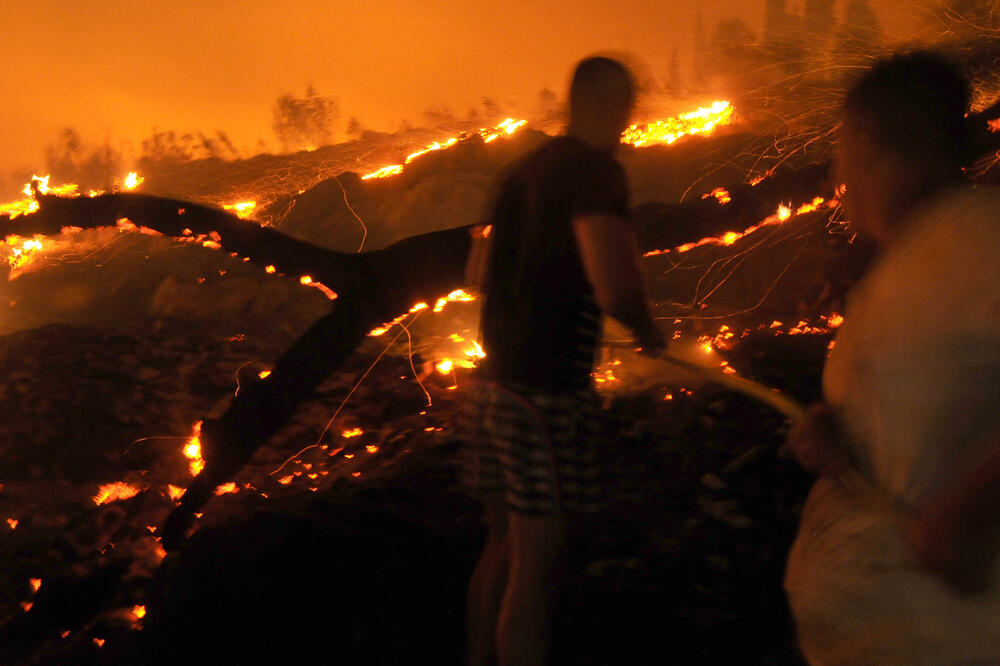Firefighters and others from the rescue services will be looking more at the sky this year during the fire fighting season, than at the scarce equipment at their disposal, which is rarely and insufficiently renewed.
Although Montenegro is proud of the fact that the current system of protection and rescue does not have a single human victim, the total losses of natural resources from fires are huge and are measured in hundreds of millions of euros.
According to the data of the European information system for forest fires, more than 180 square kilometers of forest are destroyed on average in Montenegro every year, and protected areas are no exception. This is significantly more than, for example, many times the size of France, where the flames consume an average of 110 square kilometers of forest per year.
The Forestry Administration claims that in the past decade, the area of "forests in state and private ownership" in Montenegro that has been affected by fire has halved, i.e. a total of 901,39 square kilometers. Despite this difference in numbers and collection methodology, in Montenegro, which is valid for a country with a high percentage of forests, it is certain that fires, along with illegal logging, threaten to change the ecosystem and microclimate in the country.
The defense against the elements, which can, as before, engulf huge forest expanses is not significantly better prepared than in previous years. Nor will a special unit be formed for interventions on the territory of the entire country, as some countries in the surrounding area have.
Most of the fires are started by people, but long and ineffective investigations and a small number of mostly symbolic punishments do not discourage arsonists, according to research by the Center for Investigative Journalism of Montenegro (CIN-CG).
At the moment, Montenegro has one functional "air-tractor" plane for firefighting. Of the remaining two that it owns, the Directorate for Protection and Rescue (DZS) can count on another one that is being serviced in Germany until the start of the fire fighting season. The third one, according to Zoran Miljanić, State Secretary of the Ministry of Internal Affairs, is unusable, so "the Ministry of Internal Affairs and the Government of Montenegro will raise the issue of purchasing a multi-purpose helicopter worth 10 million euros."
"Two helicopters date from the seventies, and the "youngest" one is from 1998. Therefore, the first goal of the DZS under the new leadership will be to train the outdated air-helicopter unit, said Miljanić in an interview with CIN-CG.
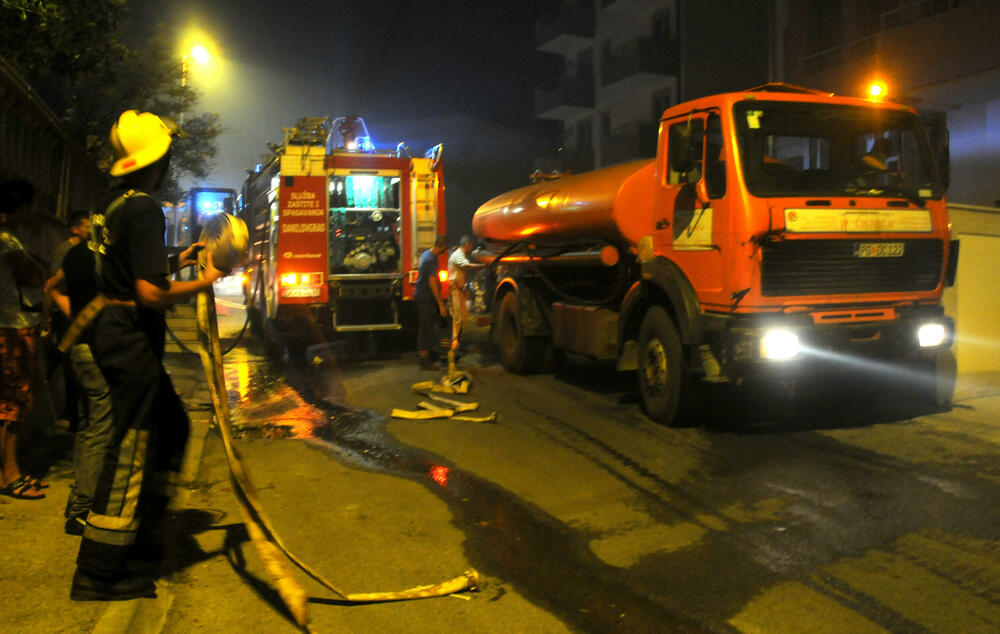
However, reinforcement cannot be expected this season.
"MUP will propose to the Government the procurement of helicopters only after the adoption of the budget. We will also apply for foreign donations, which would be the best option for financing," explained Miljanić.
He says that, as before, local governments will take care of the financing of human and material resources of the rescue services themselves. The MUP and the army will help during the season, when the resources of the local services are exhausted, while international help can be counted on only in the case when the state's capacities are not sufficient.
However, Miljanić announces his readiness to, to begin with, "listen to all objections and respond to problems within the jurisdiction of the CBS".
Costs were rising, the damage was even greater
According to the report on forest fires by the State Audit Commission, the damage caused by fires in the period 2012-2018 is more than six million euros. The non-governmental organization KOD, however, published in its brochure on fires the results of an independent investigation and, according to the estimate that is also applied in Europe, claims that the total damage in this period was 700 million euros.
Biologist Vuk Iković, a member of KOD, explains this difference with the methodology according to which in Montenegro, only direct damage, i.e. loss of wood mass, is officially calculated, while indirect damage is incomparably greater.
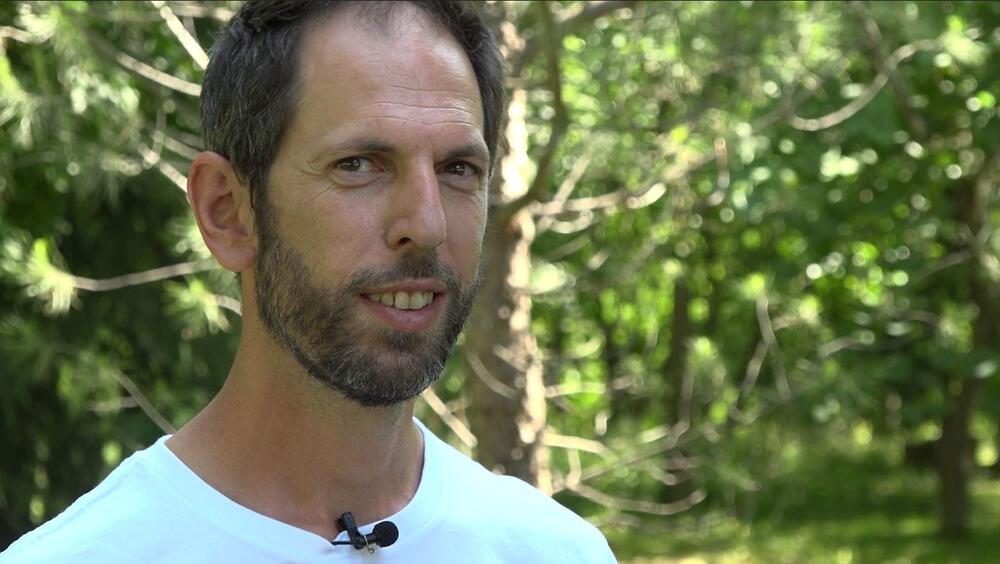
Damage from forest fires is classified as direct and indirect, while the total damage is the sum of both, Ikovic explained to CIN-CG.
He says that in the long run, the forest loses its basic value for humans - oxygen production, and many species are left without food and habitat.
"The forest has been recovering from fire for at least 40 years. "With a fire, what has been formed for decades and centuries disappears in an instant, and the land loses its biomass and becomes permanently barren," explained Iković.
Nusret Kalač, the recently dismissed director of the Forestry Administration (UZŠ), says that they were not obliged to take into account the ecological losses from the fire, but only the economic ones.
According to KOD data, during the last 10 years the budget of the CBS has been increasing, and losses from fires have been increasing.
"The budget of the CBS in 2012 was 1.962.389,27 euros, and in 2019 it was 3.497.529,33 euros, and the burned territory from 2011-2013 is smaller compared to the period 2017-2019 (564 versus 673 square kilometers )“, it was stated in the CODE document.
CIN-CG was told by the CZS, without specifying specific items, that the budget was spent on salaries and other personal incomes, contributions, expenses for materials and maintenance, various money transfers for which they did not specify the recipients, and for airline fees. helicopter unit, campaigns on participation in civil protection, equipment procurement, system upgrade...
Environmental crime is not recognized
As the most common cause of forest fires, Iković cites the human factor: burning land for mushrooms, cleaning, conversion of land to urban use, as well as cover-up of illegal logging.
According to him, the lack of a legal framework for processing forest fires, and for environmental crime in general, significantly contributes to the large number of fires.
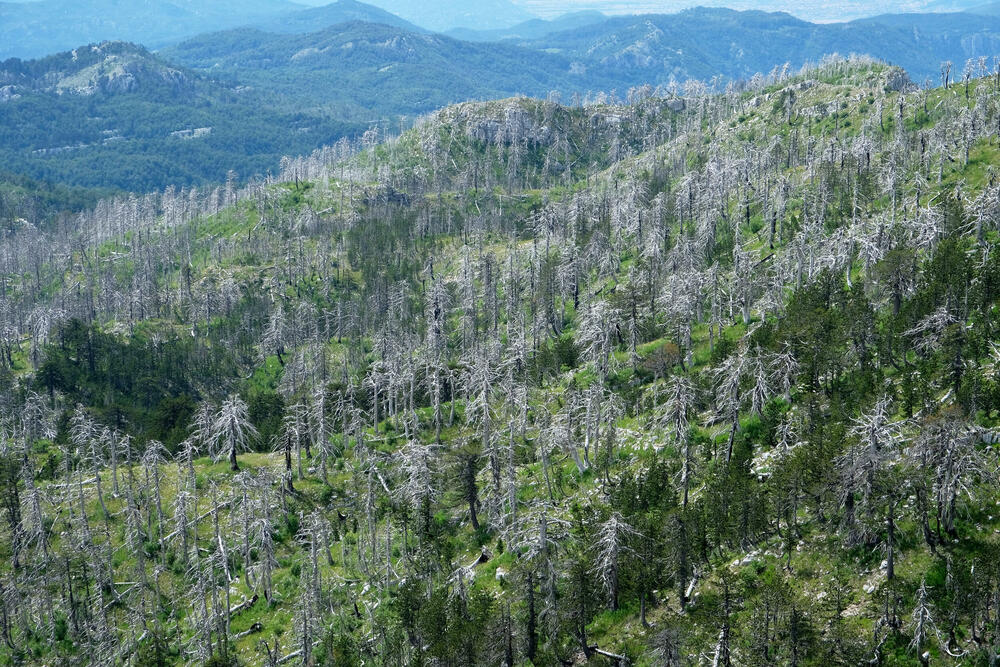
The Basic State Prosecutor's Office (ODT) in Podgorica told CIN-CG that statistics on the number of forest fires are not kept as separate cases, but that they are classified as cases of causing general danger. This prosecutor's office, unlike others, did not send data on the number of cases on open fires.
While the information from the basic state prosecutor's offices for the period 2010-2020 speaks of a very small number of prosecutions, the Forestry Administration recorded 1.001 cases of open fires during the ten-year period.
Thus, there were as many as 222 cases in Pljevlja, and the local prosecutor's office had only three cases for a decade, none of which resulted in a sentence.
The largest number of cases on outdoor fires in the past decade was handled by the ODT in Bijelo Polje - eight. Two were terminated with an official note stating that there are no grounds for further action, three criminal charges were dismissed, two proceedings are ongoing, and one is in the investigation phase.
Not counting Podgorica, there were only five prison sentences in total, two recommendations for psychiatric treatment and two suspended sentences. The shortest prison sentence was 40 days, two of six months, one of 10 months, and the longest one of one year.
Forest land concessionaires do not take care of fire protection either.
"Not a single concessionaire in the territory of Montenegro has adopted an enterprise plan for forest fire protection," states the 2019 Report on the Audit of Successes on Forest Fire Protection of the DRI. The prescribed fines for this range from 500 to 10.000 euros. The Administration for Inspection Affairs did not respond to CIN-CG's question about whether forestry inspectors controlled concessionaires during 2020, whether and how much they were fined.
National parks are also in danger
The lack of concern for natural resources is also shown by the inadequate protection in national parks (NP), where, despite detailed plans, fires often break out over several days.
A CIN-CG source, an expert on events in national parks, says that the Tara canyon in the Durmitor National Park burned consecutively for 12 years until 2019, which resulted in a change in the composition of the forest.
"Where there was a conifer, now there is a deciduous tree, and vice versa," said this source.
The interlocutor of CIN-CG explained that in the Drage river canyon, also in the Durmitor National Park, it was not possible to cut down the burnt forest, because it would cause erosion, so what remained was a conifer forest that was impossible to restore.
From JU National Parks told CIN-CG that after 2017 there was no damage from forest fires, while the renewable area was damaged by fire in the period 2010-2017. about 3.390 hectares, and non-renewable 550 hectares.
The National Parks did not provide data on the area where the forest was not completely destroyed, as well as on other burned ecosystems, such as swamps and maquis.
In September 2020, during four days in NP Skadarsko jezero, a swamp area of 12,13 square kilometers burned. From the National Parks, they explained that it was an inaccessible terrain, and that reed is an easily renewable species and that is why there was no damage assessment.
Bojan Zeković from the Center for the Protection and Study of Birds (CZIP), told CIN-CG that wetlands, like forests, are very endangered habitats, of inestimable importance for biodiversity.
"Wetlands are even in a worse position than forests, precisely because of the general attitude that it is a worthless territory - mosquitoes and reeds." They are immeasurable in the fight against climate change, especially in the Mediterranean, which will be severely affected," Zeković explained.
Firefighters without basic requirements
Several firefighters-rescuers from CIN-CG shared their dissatisfaction with the working conditions in the operational units.
"We are not ready for the season. We have 10 rucksacks in operation, and we need at least 50," Goran Tripković, operative of the Rescue Protection Service (SZS) Nikšić, told CIN-CG.

This year, as he said, SZS Nikšić operatives received protective masks and boots for outdoor fires for the first time in more than 10 years, and procurement of new uniforms began, which will be ready by June.
"For years, we patched up with uniforms older than 10 years, which were not properly maintained, so they have a high level of toxicity. Uniforms have a limited life, even with proper maintenance, for which there are no funds in Montenegro," said Tripković.
Although SZS Nikšić has two high-quality extinguishing trucks, Tripković says that they are unusable for Montenegrin terrain.
"In 2007, we received two "Mercedes Unimog" trucks from DZS, which are adapted to Germany's good fire-fighting roads, and they only make our work more difficult," he claims.
DZS denied the impracticality of these trucks, and pointed out their large extinguishing capacity. The trucks, they claim, were acquired in agreement with the then regional commanders for protection and rescue.
The Municipality of Nikšić told CIN-CG that due to the nature of the terrain, a significantly smaller Nissan Navara vehicle was acquired at the beginning of the current year.
"This vehicle still needs to be trained for forest fires, but it is not enough," Tripković said.
During the fire season, the goal is to protect civilians and property, claims Slavko Tadić, also an operative in SZS Nikšić.
"In our conditions, we barely manage to do that. We are waiting for Kornati to happen to us, so that someone remembers us," he said, recalling the accident on the Croatian islands in 2007, when 12 firefighters died in the flames while fighting an outdoor fire, and only one survived severe burns.
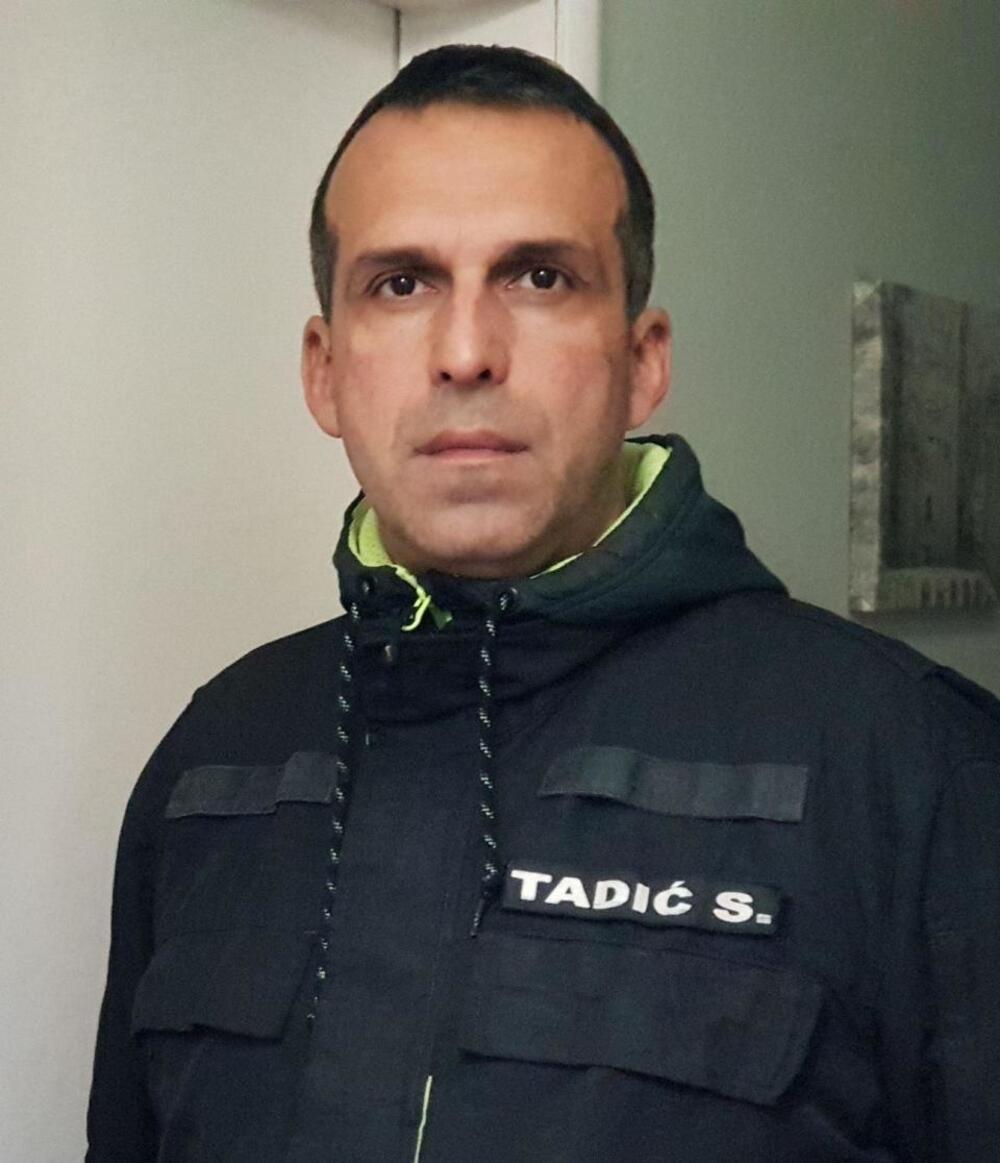
Tadić claims that Montenegro lacks an operational unit for extinguishing forest fires. Ten years ago, he participated in an unsuccessful attempt by the DSZ to form such a unit in cooperation with the EU. The goal, he says, was to create a team that would extinguish hard-to-reach mountain fires according to world standards. Professional equipment was also assigned, he says, which no one has ever used.
"In the end, the operational team was not formed. "Portable pumps, hoses, manifolds, water pipes delivered by helicopters, as well as various specialized equipment for extinguishing wildfires that were obtained have never been used and their whereabouts are unknown," Tadic said.
DZS told CIN-CG that this equipment is kept as part of the mandatory reserve in warehouses. When asked why the operational team was never formed, they said that due to the lack of training headquarters, Montenegro does not have operational units for different types of hazards.
Local rescue services are also suffering from a lack of manpower, CIN-CG interlocutors claim.
Ratko Pejović, president of the Professional Union of Firefighters of Montenegro, and a member of the SZS in Pljevlja, claims that 30 operatives in that service are too few for large forest complexes, which are often engulfed in flames in the summer.
"There are only three people left to be on duty in case of an emergency," said Pejović
Instead of civil protection - bonfires
"Citizens who clean properties by arson just need to call us to be on guard at that time," Predrag Milikić, operative of the Podgorica Rescue and Protection Service, and president of the union of firefighters at the Union of Trade Unions, told CIN-CG.
Although SZS Podgorica appeals every year, property owners often do not respond to the call and burn "on their own", explains Milikić.
Citizens are not aware of the importance of timely intervention, which can be seen in the lack of fire reports, especially if they are far from houses and properties, he said.
Only six voluntary fire brigades (VDF) in Montenegro, and civil defense only on paper, he believes, speak of the insufficient involvement of citizens in the fire protection process.
In response to a question from CIN-CG, the DZS explained that during the last 10 years, two attempts to establish functional civil protection failed, mostly due to a lack of funding and the inability to find suitable members of the unit.
Miljanić says that the establishment of civil protection will certainly not wait for the next 10 years.
"We will decide very quickly whether we want to abolish that sector or finally make it functional," he said.
Air support - inadequate
Zlatko Ćirović, fire protection engineer and commander of the Herceg Novi Protection and Rescue Service, told CIN-CG that the success of extinguishing the three Montenegrin "air-tractors" from the air cannot be compared with the "canadars", which Montenegro does not have. , but were used in the former Yugoslavia.
"Kanaders" carry six thousand liters, and "air tractor" three. In addition, he explained, "canaders" are incomparably faster because they capture water in flight.
DSZ said that for now they are not thinking about acquiring "canadars" because they are very expensive, they are always bought in pairs, and maintenance costs a lot.
Milan Gazdić, forestry engineer, and one of the authors of the KOD brochure, says that "if we estimated that the damage from the fire was 700 million euros, then the "canadars" are not an expensive option".
During 2017, when the local SZS recorded a record number of 350 fires on the territory of Herceg Novi from the beginning of June to September, according to Ćirović, the biggest contribution was made by the Croatian "Canadians".
This was not part of the international assistance organized by the MUP, but Ćirović's friends, as he says, from the Dubrovnik service responded to his call.
Ćirović said that air assistance in 2017 was extremely disorganized, and that it happened that he was waiting for planes all day.
The CBS claims that 2017 outdoor fires were recorded in the summer of 3.125, and it was impossible to cover them all with the means available at the time (one semi-functional and two functional aircraft).
"Priorities were determined depending on the complexity of the situation," they stated.
Without good air equipment, Montenegro has to count on foreign aid in crises, which is sometimes not adequate, such as the help of the Ukrainian plane in 2017, which did not prove to be skilled on the Montenegrin terrain, claims Ćirović.
Foreign air aid in 2017, according to the DSZ, consisted of two planes from Israel, a helicopter from Bulgaria, a plane from Ukraine, a helicopter from Switzerland with about thirty crew members. The costs were around 70.000 euros, with the team from Switzerland realizing everything at their own expense.
Learn from others in the EU
Gazdić claims that it is possible to significantly reduce the consequences of fires through responsible and joint action. He worked in Sardinia to protect forests from fires and says that there "the responsible work of the institutions led to a many-fold reduction in the burnt area, while the number of initial fires remained the same.
The first step is to assess the risks and make detailed plans. It is also necessary to create a database on fires, modeled after the European one.
"It includes all information about fire risks and answers the main questions of occurrence - who, how, where, when." We don't have any such data," claims Gazdić.
It is also necessary, he explains, to modernize and introduce new methodologies and technologies for monitoring and preventing forest fires. The cooperation of several institutions is also necessary: UZŠ, Police Administration, judiciary, concessionaires, protection services.
Gazdić also warned about the danger of climate change and the necessity of adaptation by improving the system.
"In the north of Montenegro, we already have visible consequences of climate change - due to the drought, we have hundreds of thousands of cubic meters of dry trees. ", claims Gazdić.
Call 112
The Forestry Administration says that in fire protection they count on 190 firefighters and 80 observers, and in the event of firefighting, all 130 engineers and technicians are required to attend. In addition to two cisterns of ten cubic meters of water, they also have 250 knapsacks, 150 fire brooms, cars for transporting people and tools. At the meeting in the Government on May 12, they said, they agreed to submit a list of the equipment they are missing. They warned forest users to behave responsibly, organized on-call duty in the regional units and activated the reporting system, which flows into the unique number of the Operational Communication Center - 112.
In Slovenia, when needed, everyone is a "Gamsi"
The president of the professional association of Slovenian firefighters, Miran Korošak, tells CIN-CG that the decentralized system is ineffective on the territory of Montenegro, due to the lack of manpower and the lack of equipment of the protection and rescue services.
In Slovenia, according to his words, the entire system functions under the administration of the Ministry of Interior, including voluntary associations whose activities are synchronized.
The number of volunteer firefighters in Slovenia is an incredible 165, of which 35 meet the qualifications for professional firefighters, the Association of Volunteer Firefighters of Slovenia told CIN-CG.
"A forest fire is extinguished within five minutes of its start - and the entire population is involved in its prevention," claims Korošak.
Professional services acquire trucks every five to seven years, after which they are given to volunteer units for use. Uniforms are purchased every five years, and earlier if necessary.
"Uniforms are handled by a special company, which tests the level of carcinogenicity after each wear," said Korošak.
For fires in inaccessible forest terrain, the special unit Gamsi, which is the Slovenian name for chamois, operates in Slovenia. That speaks to their dexterity. They operate under full equipment and stay in the field for days, if necessary, Korošak said.
Private individuals came to the rescue
"I had never seen such horror before. On Cape Veslo, 150-200 tourists were surrounded by fire, and it was impossible to approach them," he recalled for CIN-CG on the night of July 17. In 2017, Zlatko Ćirović, commander of SZS Herceg Novi.
Since the only way to rescue was the evacuation of people by sea, Ćirović turned to the Maritime Security and the Army of Montenegro for help, he claims. However, there was no adequate reaction, due to the unwillingness of these authorities to respond quickly.
"Fortunately, by that time a sufficient number of people with private vessels had come forward to begin the evacuation at Cape Veslo," Ćirović claims.
"The only thing we, the rescue service, could do was to get the message to those people to put scarves over their faces, as protection against carbon monoxide."
Maritime Safety told CIN-CG that their vessel took longer to arrive then, and that they certainly ordered all privateers with vessels to participate in the action. They explained that they currently only have one firefighting vessel, but that they are working on better equipment.
The Navy did not answer the specific question, but stated that they received a notification in the morning, and that the Army helped later that day.
Ćirović claims that the DZS behaved irresponsibly during the large fires in Luštica in 2017.
"They sent rescuers from other municipalities, without financing accommodation and food, so the whole organization fell on us at the moment of greatest crisis. "We slept and ate and ate dry food in front of the truck, without any organized rest staff," Ćirović claims.
The DZS told CIN-CG that the costs of assisting the firefighters were borne by the MUP, but if the stay was longer than one day, the municipality was responsible for the costs.
You don't become an expert in six hours
Zlatko Ćirović says that he refused to send his unit from Herceg Novi to the DZS training for hazardous materials "from 9 am to 15 pm".
"One day of hazardous materials training with two coffee breaks certainly won't turn anyone into a hazardous materials expert." Tomorrow, if some hazard happens, I should send my operatives, and say that they are trained. There are countless dangerous substances, from chemical, nuclear, etc., and we in Montenegro don't even have protective equipment for such things."
When asked about the duration and implementation of this training, the DSZ said that in most municipalities the members of the SZS do not have adequate personal and collective equipment, and that there is a lack of adequate training that would be held continuously.

Bonus video:



